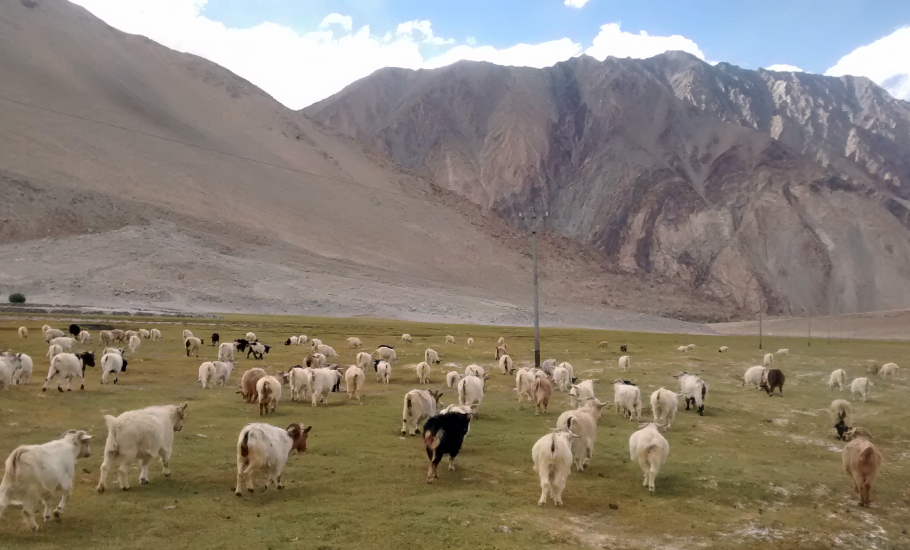
Ladakhis near LAC warned govt of Chinese encroachment, loss of pastures
Ladakh people had told Home Ministry that Chinese troops had encroached upon pasture land in Changthang region traditionally used by nomadic communities.

The deadly India-China stand-off in Ladakh may have taken some by surprise but local communities in the region have been alerting government authorities about land encroachments by the Chinese for quite some time.
As far back as 2015, the Ladakh Autonomous Hill Development Council (LAHDC) members and local representatives from Changthang in eastern Ladakh informed the Union Ministry of Home Affairs that China’s People’s Liberation Army (PLA) had encroached upon pasture land in the Changthang region traditionally used by nomadic communities.
According to a letter written by the council members and local representatives to then home minister and current defence minister Rajnath Singh, the PLA had occupied agricultural land in the Chumoor area and had not shown any sign of withdrawing.
They also warned that this may lead to a loss of livestock, including the famous Pashmina goats due to a shortage of fodder.
Related News: Galwan face-off: Outnumbered by Chinese, Indian soldiers fought in dark
The letter, reviewed by The Federal, also said that the Indian Army had put restrictions on civilian movement for grazing cattle in the Chumoor-Korzok area and requested the home minister to take steps to shift the camps of the army and the Indo-Tibetan Border Police (ITBP) — which comes under the home ministry’s jurisdiction — closer to the border.
Spread over 29,000 square kilometres, Changthang is a borderland representing India’s point of territorial contact with Chinese-controlled Tibet, where pastoralists and nomadic populations on both sides of the Line of Actual Control (LAC) are settled. Around 1,200 families of the Changpa tribe live there, with 2.5 lakh Pashmina goats.
To be sure, the Chinese incursions are not new.
“Every year the Chinese would encroach slowly. But this year, they ate away a major chunk of our pasture land in one go,” says Nurgugu, a pastoralist from Chushul hamlet of Changthang region.
Gyurmet Dorjey, National Congress, councillor of the LAHDC from Korzok, says that after annexing almost 25 kilometres of pasture land, China last week retreated from two and half kilometres.
Sonam Tsering, general secretary of All Changthang Pashmina Growers Cooperative Marketing Society in Leh, says that until a few years ago, the Changpas would cross the frozen Indus River as part of their traditional herd migration for winter grazing.
But this year, he says, it seems impossible, as the Chinese have occupied Kakjung and Tum Tselay pastures that act as the winter grazing lands.
Related News: China, India agree to deal with Galwan conflict in ‘just manner’: Official
“The problems are not only from Chinese side,” Tsering says. “Our own army is unaware of the traditional grazing practices and doesn’t allow pastoralists to graze in areas which are near the LAC. The PLA, however, normally allows their people to graze cattle in those areas.”
The tensions between India and China recently escalated into violent clashes in which at least 20 Indian soldiers, including a colonel, have been killed at Galwan Valley in eastern Ladakh. The Indian soldiers were reportedly attacked with iron rods and nail-studded clubs.
Minister of External Affairs S Jaishankar on Thursday clarified why Indian soldiers were unarmed during the clashes, saying the troops were armed but followed protocol not to use firearms, in keeping with long-standing rules of engagement.
(For more details, read The Eighth Column)
(The author is a Srinagar-based freelance journalist)


